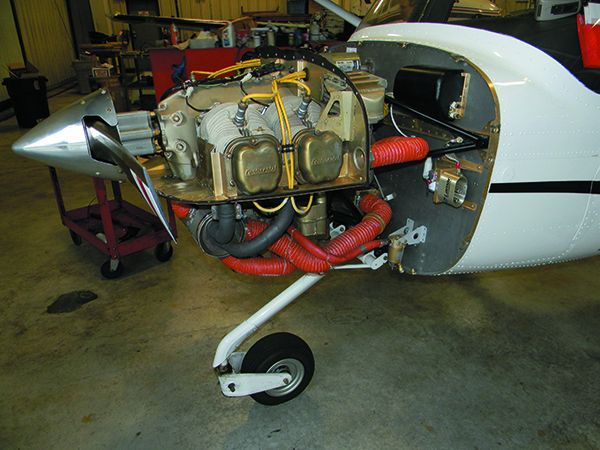MAINTENANCE SUPPLY CHAIN: HURRY UP AND WAIT
Based on the emails and phone calls we field here at the magazine, plus the pilots I run into during my travels, it’s not getting any better. I’m talking about the long lead times that owners are dealing with to get on a shop’s schedule for upgrades and maintenance, and even sourcing service parts that you would think should be easy to get your hands on. Need a rebuilt alternator for a Cessna 182, as one example? If you do, you might be disappointed. A friend called me recently and was shocked that his maintenance shop was waiting—weeks—for one that it ordered through the usually efficient and well-stocked retailer Aircraft Spruce and Specialty. His shop ended up going above and beyond and removed an alternator from another aircraft on the shop floor for use as a loaner just so it could finish the annual inspection. Life may be showing signs of getting back to normal as the pandemic eases, but things don’t seem to be normal when it comes to wrenching aircraft—and even other machines, as I learned firsthand.
I recently had one of my motorcycles at a Honda dealer for some work and ended up retrieving it—unrepaired—because the dealer couldn’t source a fairly common part for what it projected to be “months, if not longer.” I found the part on eBay, took a day off from work and replaced it myself. “We have motorcycles and power equipment that have been sitting for over a month because we can’t get the parts we need,” the service manager told me. My neighbor waited weeks for the local BMW dealership to finish his late-model vehicle because it couldn’t get parts in a reasonable amount of time. There’s also a shortage of good technicians.
When I went into an avionics shop on a recent fuel stop, the shop’s manager told me the average major project is taking almost twice as long as it used to because not only are parts and installation supplies on a slow boat from wherever, he’s having a real problem hiring experienced and reliable techs to pump out the work. “I’m running out of hangar space and tiedown spots to store these aircraft while I wait for parts. Owners are screaming bloody murder and it isn’t our fault,” he told me. And bench techs? Forget it. Good ones who know how to effectively troubleshoot radios and other systems seem to be a dwindling commodity. As a result, shops are sourcing component-level repairs to third-party repair shops that are facing similar challenges when it comes to staff and service parts.
There isn’t much any of us can do about the parts shortages as assembly lines continue to slow. But as I’ve suggested in the past, it’s not a good time to be jumping from shop to shop. If you find a shop that you’re happy with, stick with it—and be patient as it works through the supply and staffing dilemma. If you’re an existing and valued customer (that is, one that pays the bill on time and isn’t confrontational), your chances of getting your airplane back in a reasonable amount of time may be in your favor. But you can avoid conflicts by asking any shop where your aircraft fits into its schedule. Is the work a major focus on the shop floor, or is it filler work—something that will get done as time permits between larger jobs? It doesn’t matter if it’s an avionics project, an engine overhaul or paint and interior upgrades—every project has a certain level of priority on a shop’s schedule. If you know where you stand, you can better schedule trips without your own schedule (and the relationship) blowing up.
Dealing with a hangar queen of your own? Let’s hear about it. We’re preparing a field report of the maintenance/parts supply chain, what it means for costs in the certified and experimental markets, including factory-new aircraft and engines, in an upcoming issue of Aviation Consumer. —Larry Anglisano





